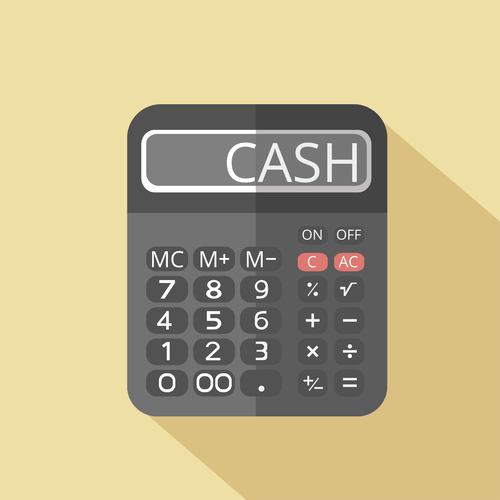
These professionals understand the importance of accounts receivable management, and they will be happy to help you streamline your processes to ensure you have the best information possible. Our partners cannot pay us to guarantee favorable reviews of their products or services. After all, delaying cash outflow is the final lever a customer has when things aren’t going so well. For example, in these firms, the percentage of net sales method is typically used to prepare monthly and quarterly statements, whereas the aging method is used to make the final adjustment at year-end. At the end of 2019, the balance in Accounts Receivable was $200,000, and an aging schedule of the accounts is presented below.
If an adjusting entry of $3,000 is made during year 2, Bad Debts Expense will report a $3,000 debit balance, while Allowance for Doubtful Accounts might report a credit balance of $17,000. An accounts receivable aging is also known as a schedule of accounts receivable. A variation is that this https://www.bookstime.com/articles/just-in-time-inventory schedule may contain a simple listing of receivables by customer, rather than breaking them down further by age. Come up with a plan on how you will reach out to customers about their past due amount. For example, you could send an invoice reminder to their email or give the customer a call.
How to Use the Aging of Accounts Receivable Method for Bad Debts
Sometimes this schedule is prepared using “days past due.” Different companies do it according to their own internal needs. It’s that simple and is a canned report in most, if not all, accounting packages. We can use this report to more precisely calculate the allowance for doubtful accounts and therefore the net realizable value of accounts receivable. One of the ways that management can use accounts receivable aging is to determine the effectiveness of the company’s collections function. If the aging report shows a lot of older receivables, it means that the company’s collection practices are weak.

The specific receivables are aggregated at the bottom of the table to display the total receivables of a company, based on the number of days the invoice is past due. If there are any clients consistently falling behind the payment schedules, you can discard them or take action to improve the collection system. If more clients remain within the average period, you have an efficient collection system. The general ledger account Accounts Receivable usually contains only summary amounts and is referred to as a control account. The details for the control account—each credit sale for every customer—is found in the subsidiary ledger for Accounts Receivable. The total amount of all the details in the subsidiary ledger must be equal to the total amount reported in the control account.
How Management Uses Accounts Receivable Aging
For example, there are fewer receivables in the aging report created before the month-end, but there are more receivables payments for the company. The company’s management should match their credit terms with the periods of the aging report to get a clear picture of the accounts receivables. An aging report is used to show outstanding customer invoices that show an outstanding number of days. If a company’s billing policy allows customers to pay for products in the future, then the aging report allows the company to monitor the customer invoices. In accounting, aging of accounts receivable refers to the method of sorting the receivables by the due date to estimate the bad debts expense to the business. One of the main uses of an accounts receivable aging report is to identify customers behind on payments.

The accounts receivable aging report can also indicate which customers are becoming a credit risk to the company. Older accounts receivable expose the company to higher risk if the debtors are unable to pay their invoices. Many accounting software packages help in preparing the aging schedule automatically. An aging schedule helps companies to keep well-informed of accounts receivables in the hope of reducing doubtful debts. Accountants use accounts receivables aging as a management technique to evaluate a company’s accounts receivables and find out existing irregularities.
Best Free Accounting Software for Small Businesses
Let’s say you’ve been reviewing your financial statements on a monthly basis, and you notice the accounts receivable balance on your balance sheet is creeping steadily upward. You ask your bookkeeper for your accounts receivable aging reports for the last few months, and you notice several customers have large balances in the column. The accounts receivables aging method categorizes the receivables based on the range of time an invoice is due.
The total of the amounts due in each date silo is shown at the bottom of each column. Based on the calculation ($500,000 x 1%) + ($200,000 x 5%) + ($50,000 x 15%), the company has an allowance for doubtful accounts of $22,500. Categories such as current, 31—60 days, 61—90 days, and over 90 days are often used.
Understanding Goodwill in Balance Sheet – Explained
All amounts in the aging receivable report are prepared based on some of the amounts invoiced to customers. Accounts receivables aging is the time period from when sales are realized, and accounts receivables are created to the balance sheet. Accounts Receivables aging is used to reflect a company’s ability to recover its credit sales in a certain accounting period. If the average age of accounts receivables is large, its ability to recover credit sales is worse. You’ll be able to analyze which client payments are nearing the bad debt period limit. Accounts receivable are an integral part of the cash flow system of any business.
- When making an adjustment to the account when it has a debit balance, take the balance and add it to the desired balance to determine the journal entry amount.
- If most of your accounts receivable balance is in the or column, consider tightening up your payment terms — maybe offering net 15 instead of net 30 terms — to collect payments faster.
- One of the main uses of an accounts receivable aging report is to identify customers behind on payments.
- The “aging” of accounts receivable refers to the number of days an invoice is past due.
- Accounts receivables aging is the time period from when sales are realized, and accounts receivables are created to the balance sheet.
Accounts receivable aging is useful in determining the allowance for doubtful accounts. When estimating the amount of bad debt to report on a company’s financial statements, the accounts receivable aging report is useful to estimate the total amount to be written off. The aging report is an essential tool to estimate potential bad aging of accounts receivable method formula debts used to revise allowance for doubtful debts. The general method is to derive the historical percentage of invoice dollar amounts and apply the percentage total columns of the aging report. If the accounts receivable aging report shows more clients are delaying payments with larger amounts, it is an indication of credit risk.
What is an accounts receivable aging report?
Since No. of days in a Financial Year is 365 days but we generally calculate the aging by multiplying of 360 days to avoid fractions. You can take the analysis of the collection system one step ahead to analyze each client individually. Because the Bad Debts Expense account is closed each year, while the Allowance for Doubtful Accounts is not, these two balances will most likely not be equal after the company’s first year of operations. Finally, the company’s auditors may use the report to select invoices for which they want to issue confirmations as part of their year-end audit activities.
Creating an aging report for the accounts receivables sorts the unpaid customers and credit memos by date ranges, such as due within 30 days, past due 31 to 60 days, and past due 61 to 90 days. Management uses the information to help determine the financial health of the company and to see if the company is taking on more credit risk than it can handle. Companies will use the information on an accounts receivable aging report to create collection letters to send to customers with overdue balances. Accounts receivable aging reports may be mailed to customers along with the month-end statement or a collection letter that provides a detailed account of outstanding items.
